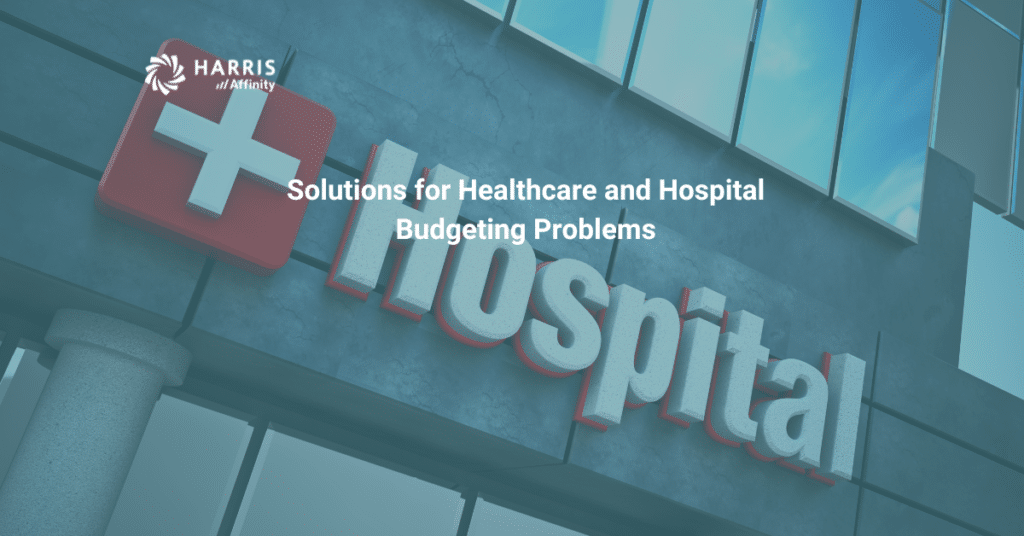2022 was the worst year financially for hospitals and 2023 does not initially show much improvement. Staffing shortages, labor costs, supply chain disruptions, inflation, rising interest rates, and more are pressuring hospital revenue and expenses. Healthcare and hospital budgeting are critical aspects of managing healthcare institutions. As healthcare costs continue to rise, healthcare providers are under immense pressure to find ways to reduce their costs. It’s essential to take a strategic approach to hospital budgeting, identifying areas where cost savings can be achieved without compromising patient care.
Strategic Planning
Strategic planning is critical for hospitals looking to reduce costs. It involves creating a roadmap for achieving organizational goals. It can help hospitals identify areas where they can reduce costs while still providing high-quality care.
A strategic plan should include an analysis of the hospital’s current financial situation, an assessment of the market, and a review of the hospital’s strengths and weaknesses. Hospitals should also identify areas where they can reduce costs, such as staff reductions, supply chain optimization, and process improvements.
Data-Driven Analytics
Companies that use data-driven strategies have six percent higher profits and five percent higher productivity than their competition, and healthcare companies can directly benefit from using data analytics in strategic planning in terms of cost reduction, improved quality and outcomes, and improved coordination of care. Using data analytics can also help hospitals identify where they can reduce costs. By analyzing data, hospitals can gain insights into their operational costs, identify trends, and predict future expenses. This can help hospitals make informed decisions about where and how to allocate resources. For example, data analytics can help hospitals identify areas where they can optimize their supply chain. By analyzing procurement data, hospitals can identify opportunities to negotiate better prices with suppliers, reduce inventory costs, and eliminate waste.
Value-Based Care
Another way to address hospital budgeting problems is to implement value-based care. This approach focuses on improving patient outcomes while reducing costs by emphasizing preventative care and avoiding unnecessary hospitalizations. By prioritizing preventive care, hospitals can reduce the need for expensive treatments and procedures. Value-based care investment quadrupled during the pandemic and is emerging as a distinct healthcare landscape on its own. Research suggests that the number of patients treated by physicians within the value-based care landscape could double in the next five years. Health organizations that implement value-based care report the benefits of lowering costs, reducing medical errors, promoting healthy habits for patients, and improving patient satisfaction. Value-based care favors the fee-for-value model (FFV) vs the fee-for-service model (FFS) and providers are rewarded for helping patients become healthier.
Discover how hospitals used Activity-Based Costing to improve margins
Activity-Based Costing
Activity-Based Costing calculates the cost based on resource usage, a bottom-up approach that makes isolating costs simpler than the usual top-down approach frequently used in hospitals. If healthcare organizations start using the (FFV) model, a critical component in that transition is being able to see the total cost of care and the associated resource with cost drivers for the service. Activity-Based Costing allows hospitals to do just that. Activity-Based Costing shows a detailed picture of the patient journey while giving a comprehensive view of resources and cost drivers. 65% of health systems that implement Activity-Based Costing benefit from higher net operating profit margins and substantially improved financial and clinical outcomes.
Budget Management Solution
To manage budgets effectively, hospitals can use budget management solutions. These solutions provide real-time visibility into the hospital’s financial performance, enabling hospital administrators to identify cost-saving opportunities and adjust their spend accordingly. Budget management solutions can also help hospitals reduce the time and effort required to manage budgets manually. Hospital budgeting best practices include developing realistic budgets, monitoring budget variances in healthcare to actuals, and implementing effective budget management solutions. Harris Affinity Decision Support (ADS) offers Budgeting and Costing solutions that have helped hospitals for over 40 years. Our customers have been able to make sound business decisions with the help of our solutions. Schedule a demo to see how ADS can help your organization.
Conclusion
Healthcare and hospital budgeting can be a complex and challenging task, but there are solutions available to address budgeting problems and promote financial sustainability. Hospitals and the healthcare industry are struggling. Some hospitals are barely keeping their doors open with decreasing margins caused by higher costs and inflation. Patients are having to choose between going to the doctor and putting gas in their vehicles. This should not be what the healthcare landscape looks like. By implementing solutions like strategic planning, data-analytic tools, value-based care and a financial decision support solution [Harris Affinity], hospitals can begin to address budgeting problems while improving patient outcomes. By implementing comprehensive solutions for healthcare and hospital budgeting problems, hospitals can enhance their financial stability and continue to provide high-quality patient care.

